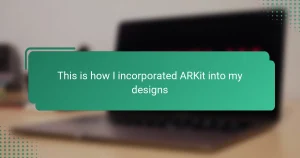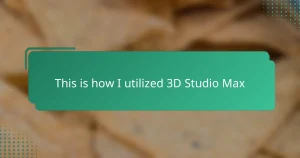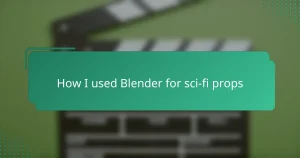Key takeaways
- Science fiction props blend imagination with reality, serving as powerful storytelling tools that evoke advanced technology and societal themes.
- Essential ZBrush tools like Move, Clay Buildup, and ZModeler help create dynamic, detailed sci-fi props that feel tangible and believable.
- Effective planning, including sketching, scale considerations, and gathering visual references, is crucial for creating authentic and innovative designs.
- Texturing and detailing with alphas, color, and surface finishes enhance realism, giving props a history and character that deepen their narrative impact.
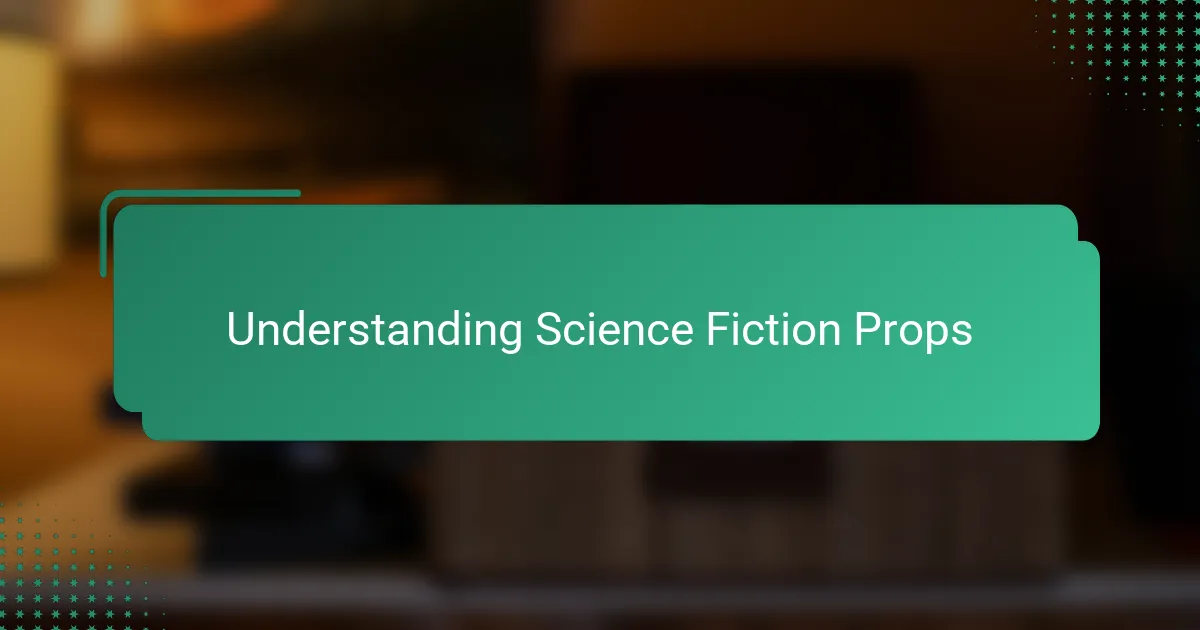
Understanding science fiction props
Science fiction props have always fascinated me because they blend imagination with a touch of reality. What makes a prop truly sci-fi? For me, it’s the way these objects hint at advanced technology or alien worlds, sparking curiosity and wonder.
I remember the first time I held a sci-fi prop replica—it was like holding a piece of another universe. These props aren’t just decorations; they tell stories and build immersive worlds that feel believable yet extraordinary. Have you ever noticed how the smallest details can make a prop feel authentic?
Understanding sci-fi props means appreciating their roles beyond aesthetics. They often symbolize concepts like futuristic innovation or societal fears, making them powerful storytelling tools. This layered significance is what drew me deeper into crafting them with ZBrush, aiming to capture both form and meaning.
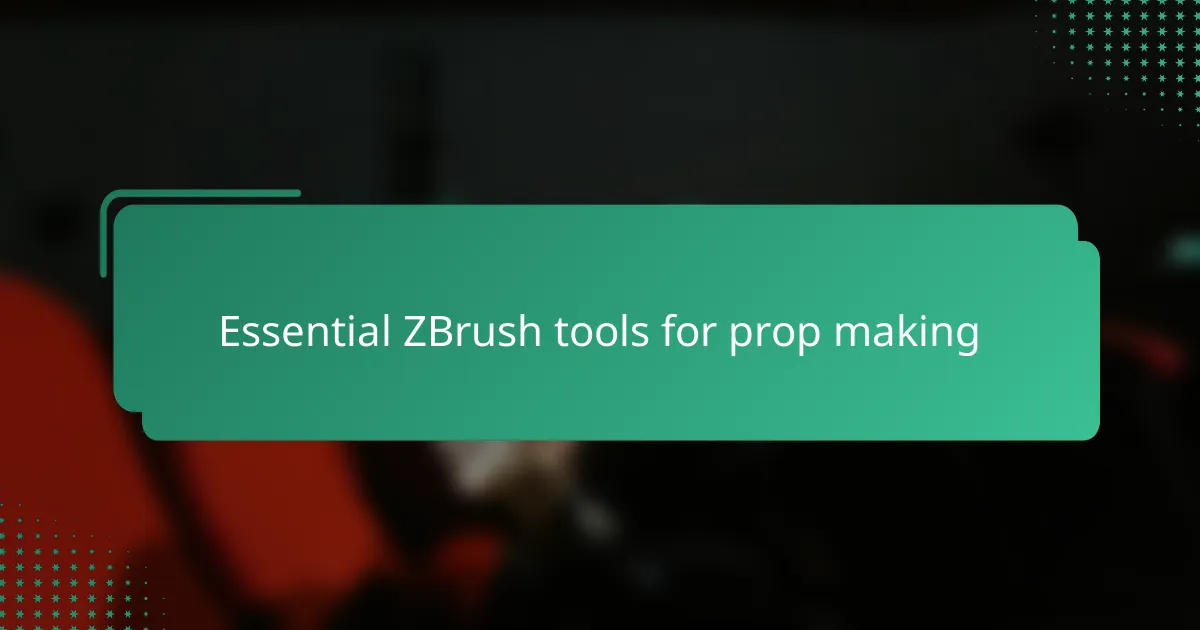
Essential ZBrush tools for prop making
When I first started using ZBrush for prop making, the Move and Clay Buildup brushes became my best friends. They allowed me to shape rough ideas into forms that felt alive and dynamic, almost like sculpting with real clay. Have you ever tried to push your design beyond basic shapes? These tools give you that tactile control to do just that.
Another essential for me is the ZModeler brush. At first, it seemed technical and intimidating, but once I got the hang of it, I could create hard-surface details crucial for sci-fi props. I recall working on a futuristic helmet where precise edges and panel lines brought the piece to life—it wouldn’t have been possible without this tool.
Lastly, Dynamesh completely changed how I approached complex forms. It’s like having an endless supply of digital clay that stays flexible no matter how much you stretch or combine shapes. This freedom helped me experiment without fear, leading to props with intricate details and organic sci-fi aesthetics that feel both believable and imaginative.
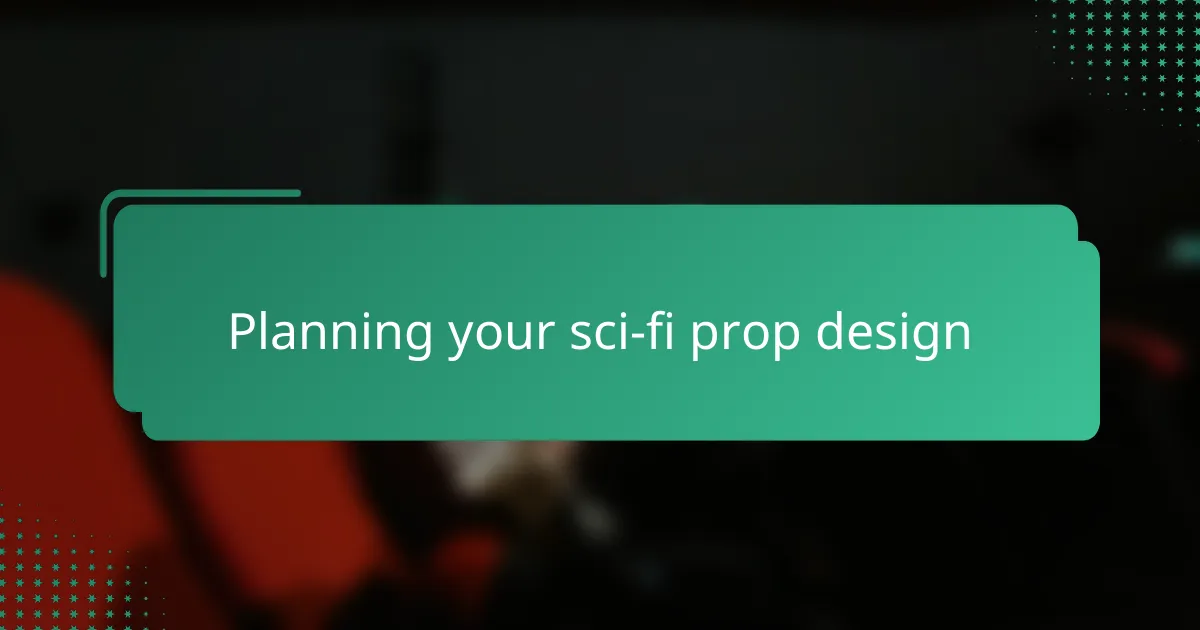
Planning your sci-fi prop design
Planning a sci-fi prop design always begins with a spark of imagination paired with clear intent. I like to sketch out my ideas roughly, asking myself what story this prop should tell and how its form can reflect that narrative. Have you ever noticed how a simple silhouette can evoke an entire world before a single detail is added? That’s where I start—laying down shapes that carry meaning even in their simplest forms.
Deciding on scale and functionality early on is something I’ve learned to prioritize. Will the prop be handheld, worn, or part of a larger set? Thinking through these practicalities saves a lot of headaches later and helps the design stay grounded. It’s exciting to balance creativity with constraints—the kind of challenge that pushes me to innovate while keeping things plausible within the sci-fi context.
I also find it crucial to gather visual references, both from classic sci-fi media and real-world technology. This mix fuels my design with authenticity and originality. Sometimes, I get lost diving into countless images, but those moments are gold because they open doors to unexpected ideas. How else could I confidently blend futuristic aesthetics with believable mechanics if not through deliberate, inspired planning?
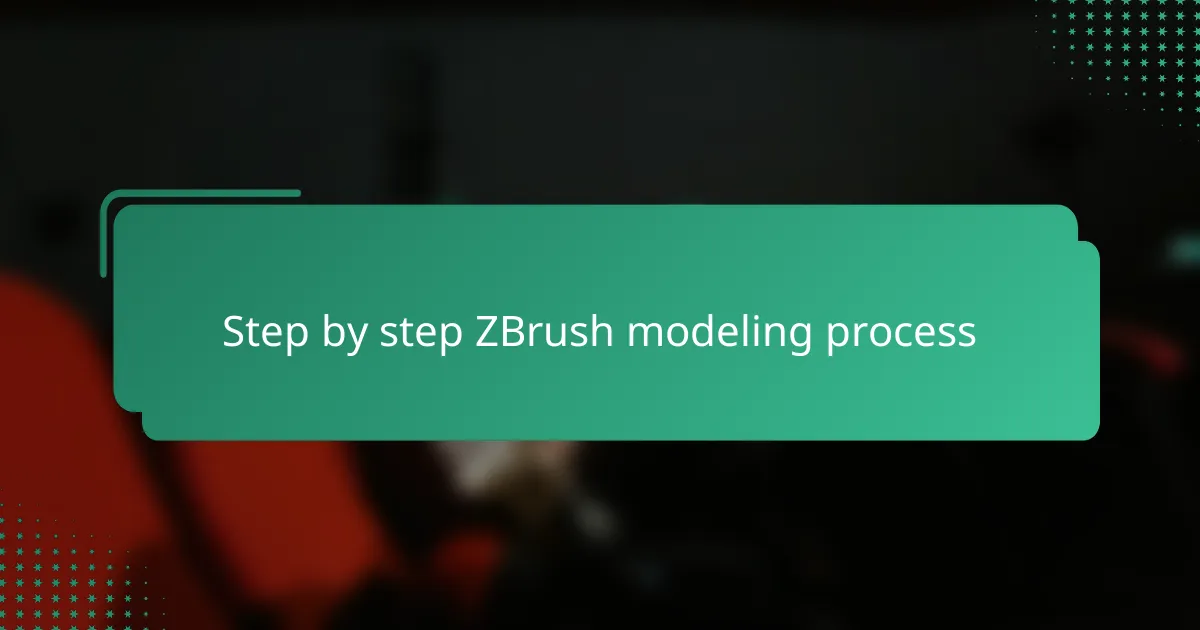
Step by step ZBrush modeling process
Starting the modeling process in ZBrush feels a bit like setting out on an adventure without a map—exciting but daunting. I usually begin with a simple base mesh, either imported or created with ZSphere structures, to block out the overall silhouette. Have you ever felt that moment when a rough shape on screen suddenly sparks the whole concept into life? That’s when I know I’m on the right path.
From there, I dive into refining forms using brushes like Clay Buildup and Move, carefully sculpting surfaces to add volume and character. It’s a delicate balance between pushing shapes to appear futuristic yet believable and leaving room for creative surprises along the way. I find this stage the most satisfying because the prop starts to feel tangible, almost like something you could reach out and touch.
As details become more intricate, I switch to using the ZModeler brush for hard edges and panel lines, bringing that crisp sci-fi aesthetic forward. Incorporating Dynamesh at different phases keeps the geometry fluid, so I can merge and modify forms without worrying about topology. Trust me, discovering how to juggle these tools effectively transformed my workflow from frustrating to freeing, letting the model evolve naturally and confidently.
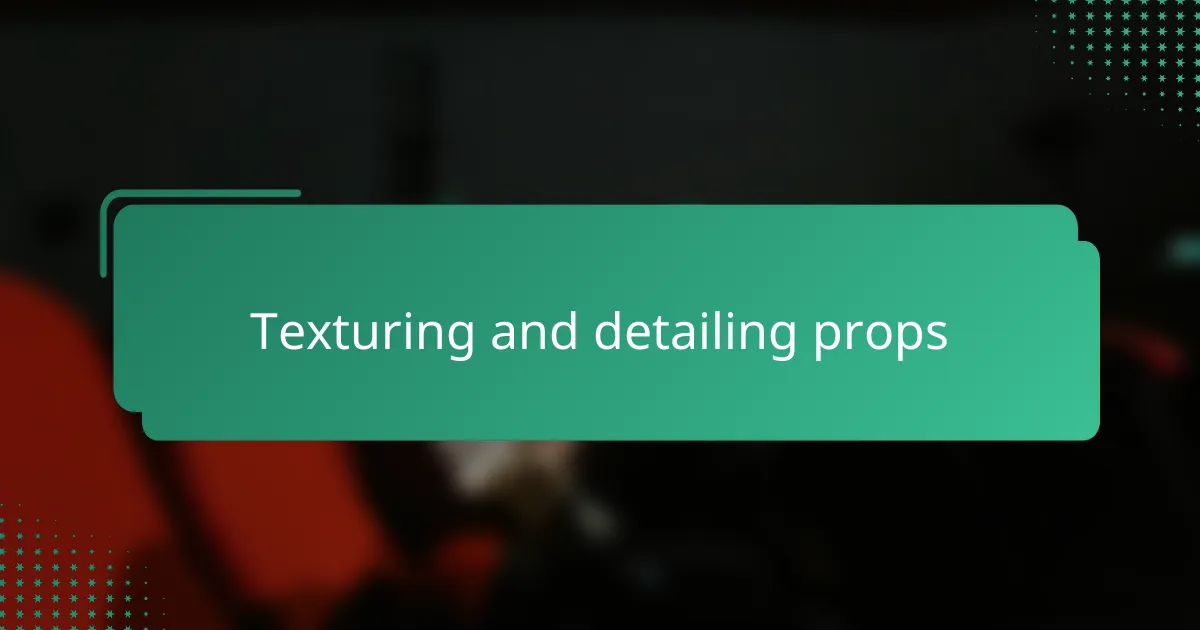
Texturing and detailing props
Texturing and detailing props is where the magic of realism truly takes shape. I often find myself zooming in close, obsessing over every scratch, dent, or wear mark because these imperfections tell stories—did this gadget survive a space battle or a long journey across alien terrain? Adding those subtle textures transforms a flat surface into something with history and character.
One technique I swear by is using alphas and custom brushes in ZBrush—they let me imprint intricate patterns or paneling that would be painstaking to sculpt by hand. Have you ever watched a tiny detail suddenly bring an entire prop to life? That moment always gives me a thrill, like uncovering hidden layers within the design.
Color and surface finish also play huge roles in selling the sci-fi vibe. Even though ZBrush mainly focuses on sculpting, I often prepare my model’s textures here before exporting for painting. Experimenting with materials—from sleek metals to weathered composites—helps me imagine how light interacts with the prop’s surfaces, adding that crucial touch of authenticity.
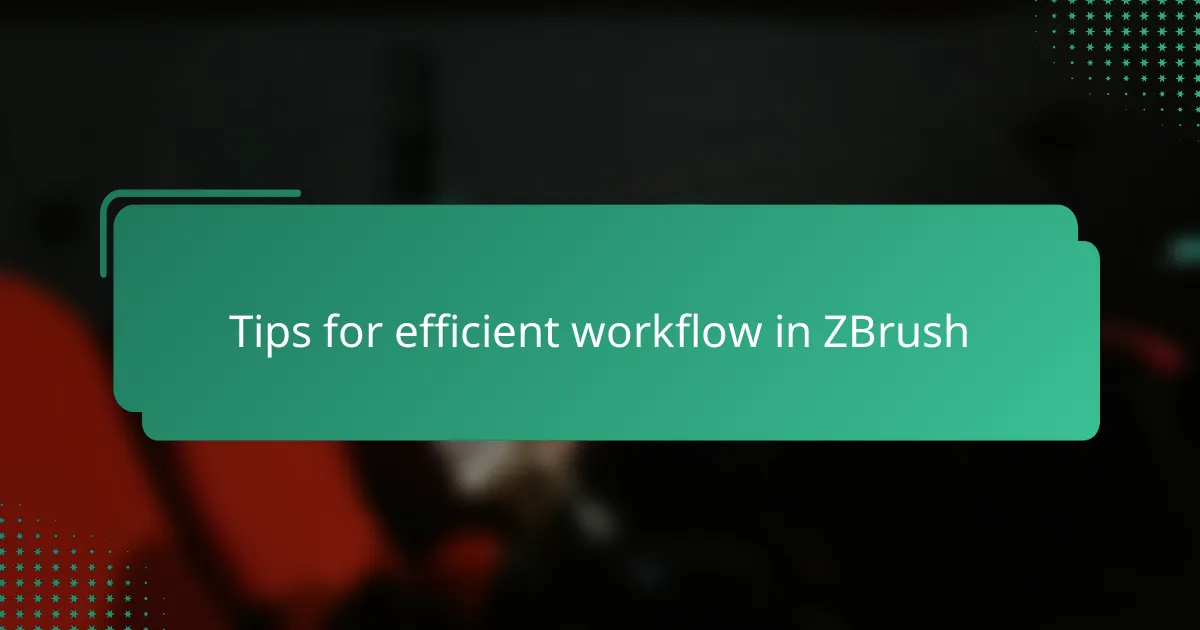
Tips for efficient workflow in ZBrush
One of the biggest game-changers for me was learning to organize my subtools early on. At first, I used to let everything pile up in one list, which quickly became overwhelming. Have you ever lost track of a small but important detail buried deep in your subtool stack? Keeping things neat not only saves time but also keeps my creative flow uninterrupted.
Another tip I’ve found invaluable is using Layers strategically. They act like a safety net, letting me experiment with shapes or details without fear of losing previous versions. When working on a complex prop, this flexibility feels like having a conversation with the model itself—trying out ideas, stepping back, and then refining what works best.
Lastly, I can’t stress enough the importance of setting up custom UI shortcuts. Early on, I wasted so much time digging through menus for my favorite brushes or tools. Have you tried customizing your workspace? Once I did, everything felt more intuitive and faster, turning what used to be tedious adjustments into fluid, enjoyable steps in the creative process.
